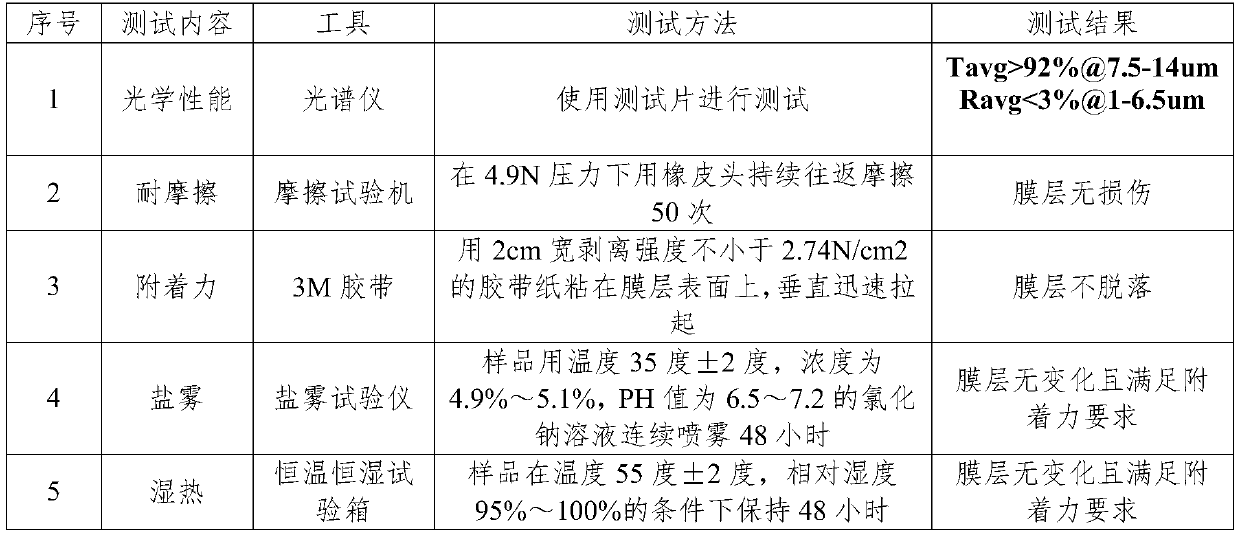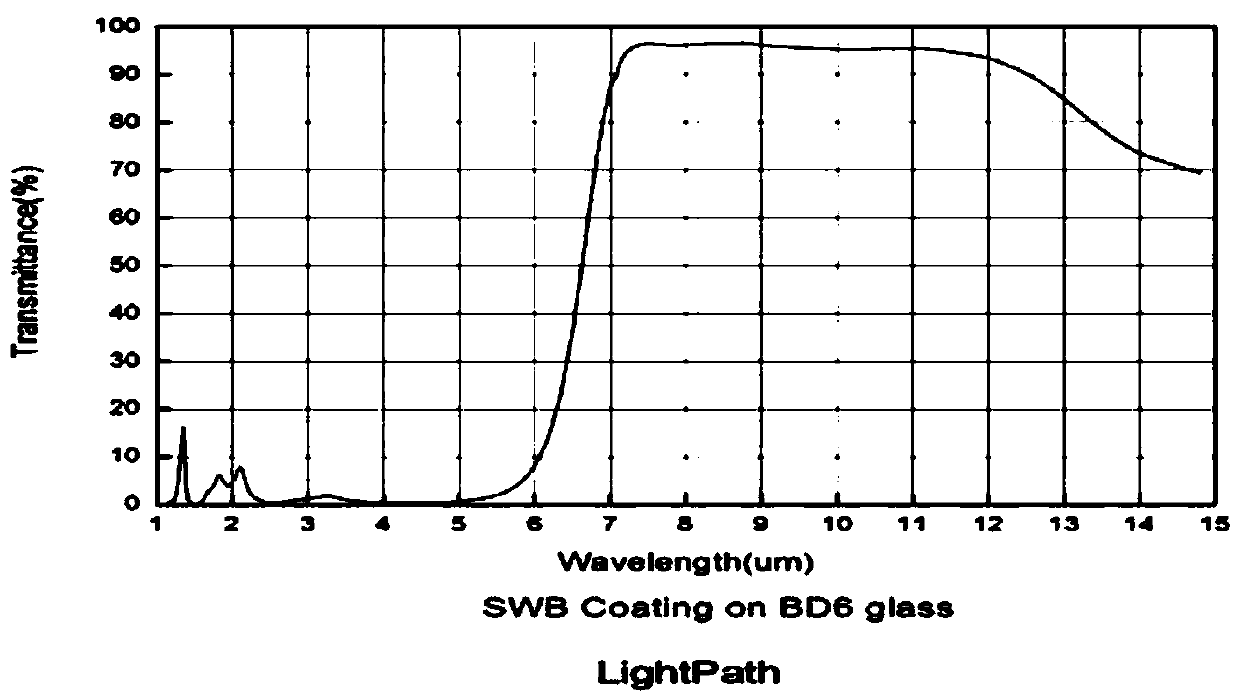Far-infrared short-wave cut-off film for mould pressing of aspheric lens
An aspheric lens and far-infrared technology, applied in optics, instruments, optical components, etc., can solve the problems of easy film release, low melting point, and difficulty in realizing a large far-infrared short-wave cut-off film, and achieve high cut-off rate and high transmission rate effect
- Summary
- Abstract
- Description
- Claims
- Application Information
AI Technical Summary
Problems solved by technology
Method used
Image
Examples
Embodiment 1
[0053] A far-infrared short-wave cut-off film for molding an aspheric lens, comprising a first optical surface and a second optical surface;
[0054] The first optical surface includes the following components by weight:
[0055] 1 part of yttrium oxide;
[0056] 65 parts of ytterbium fluoride;
[0057] 15 parts of zinc sulfide;
[0058] Germanium 25 parts;
[0059] The second optical surface includes the following components by weight:
[0060] 3 parts of yttrium oxide;
[0061] 60 parts of ytterbium fluoride;
[0062] 30 parts of zinc sulfide;
[0063] Germanium 10 parts.
[0064] A production process for a far-infrared short-wave cut-off film for a molded aspheric lens, comprising the following steps: S1, coating the first optical surface and the second optical surface of the lens with different properties and different thicknesses of the film layers, Use an infrared optical coating machine to coat the thin film by vacuum evaporation; S2, complete the thin film prep...
Embodiment 2
[0066] A far-infrared short-wave cut-off film for molding an aspheric lens, comprising a first optical surface and a second optical surface;
[0067] The first optical surface includes the following components by weight:
[0068] 2 parts of yttrium oxide;
[0069] 70 parts of ytterbium fluoride;
[0070] 10 parts of zinc sulfide;
[0071] Germanium 20 parts;
[0072] The second optical surface includes the following components by weight:
[0073] 2 parts of yttrium oxide;
[0074] 55 parts of ytterbium fluoride;
[0075] 35 parts of zinc sulfide;
[0076] Germanium 15 parts.
[0077] A production process for a far-infrared short-wave cut-off film for a molded aspheric lens, comprising the following steps: S1, coating the first optical surface and the second optical surface of the lens with different properties and different thicknesses of the film layers, Use an infrared optical coating machine to coat the thin film by vacuum evaporation; S2, complete the thin film pre...
Embodiment 3
[0079] A far-infrared short-wave cut-off film for molding an aspheric lens, comprising a first optical surface and a second optical surface;
[0080] The first optical surface includes the following components by weight:
[0081] 3 parts of yttrium oxide;
[0082] 75 parts of ytterbium fluoride;
[0083] 5 parts of zinc sulfide;
[0084] Germanium 15 parts;
[0085] The second optical surface includes the following components by weight:
[0086] 1 part of yttrium oxide;
[0087] 50 parts of ytterbium fluoride;
[0088] 40 parts of zinc sulfide;
[0089] Germanium 20 parts.
[0090] A production process for a far-infrared short-wave cut-off film for a molded aspheric lens, comprising the following steps: S1, coating the first optical surface and the second optical surface of the lens with different properties and different thicknesses of the film layers, Use an infrared optical coating machine to coat the thin film by vacuum evaporation; S2, complete the thin film prepa...
PUM
 Login to View More
Login to View More Abstract
Description
Claims
Application Information
 Login to View More
Login to View More - R&D
- Intellectual Property
- Life Sciences
- Materials
- Tech Scout
- Unparalleled Data Quality
- Higher Quality Content
- 60% Fewer Hallucinations
Browse by: Latest US Patents, China's latest patents, Technical Efficacy Thesaurus, Application Domain, Technology Topic, Popular Technical Reports.
© 2025 PatSnap. All rights reserved.Legal|Privacy policy|Modern Slavery Act Transparency Statement|Sitemap|About US| Contact US: help@patsnap.com


